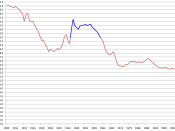The Past, Present, and future of the Canadian Labour Force
During the past decade, three key factors have shaped the nation's workforce; the demand for skills in the face of advancing technologies, and the 'knowledge based economy'; a working-age population that is increasingly made up of older people and a growing reliance on immigration as a source of skills and labour force growth.
The demand for skills has been clearly evident in new data from the 2001 Census. Between 1991 and 2001, the number of people in the labour force increased by 1.3 million. Almost one-half of this growth occurred in highly skilled occupations that normally require university qualifications, while low skilled occupations requires high school or less accounted for only a quarter of the increase. In the future, the requirements of education for jobs will keep increasing. At the same time, the workforce has become much "greyer".
The average age of the labour force rose from 37.1 years in 1991 to 39.0 years in 2001.
By the end of the decade, 15% of the labour force was within 10 years of retirement age. By 2011, when almost one fifth of the baby-boom generation will be at least 61 years of age, the potential exists for shortages in certain occupations.
In addition, rates of fertility have remained at low levels for the past 30 years. As a result, fewer young people are entering the working-age population to replace individuals in the age group nearing retirement. In 2001, there were 2.7 20 to 34 in the labour force for every participant aged 55 and over, down from a ratio of 3.7 in 1981.
Canada has increasingly turned to immigration as a source of skills and knowledge. Census data show that immigrants who landed in Canada during the 1990s, and...


